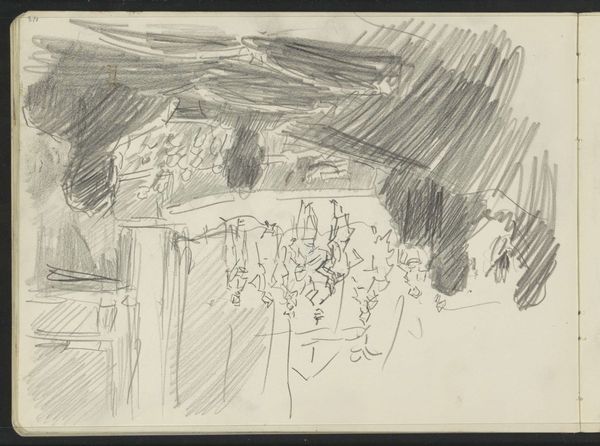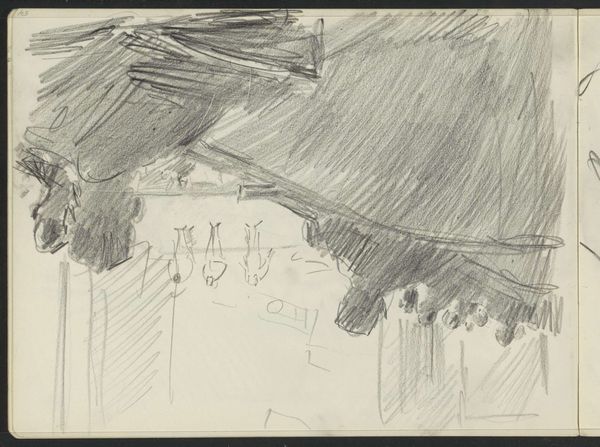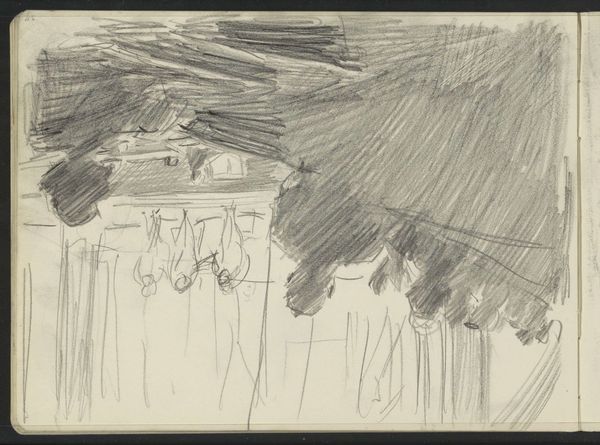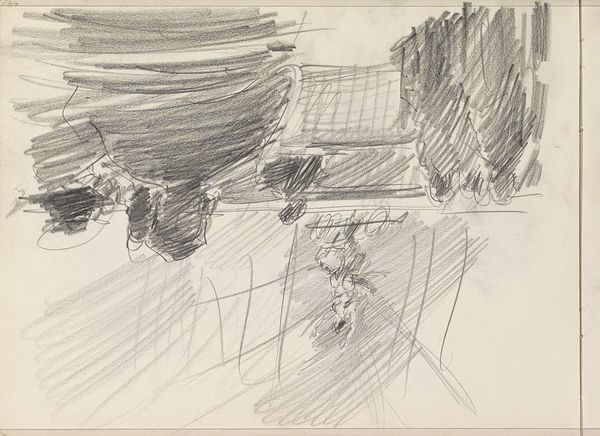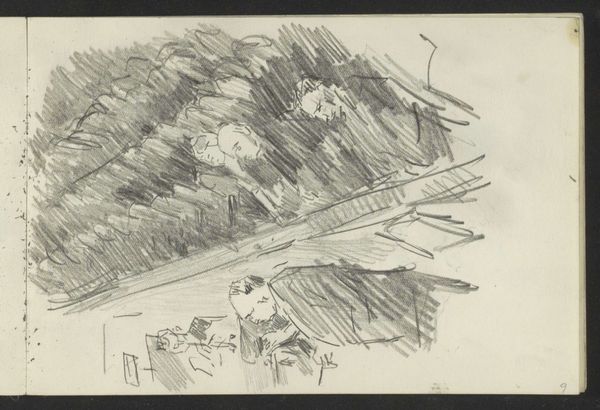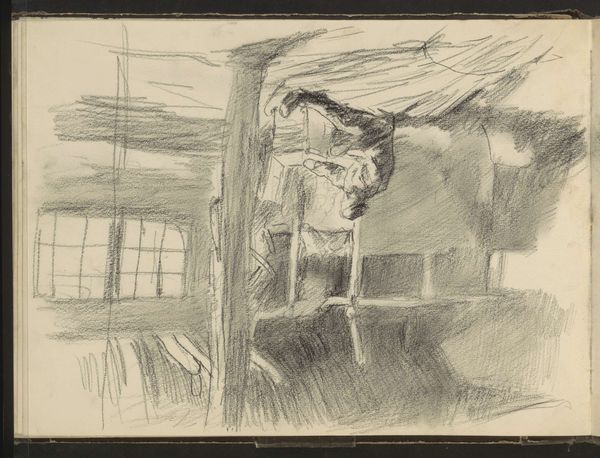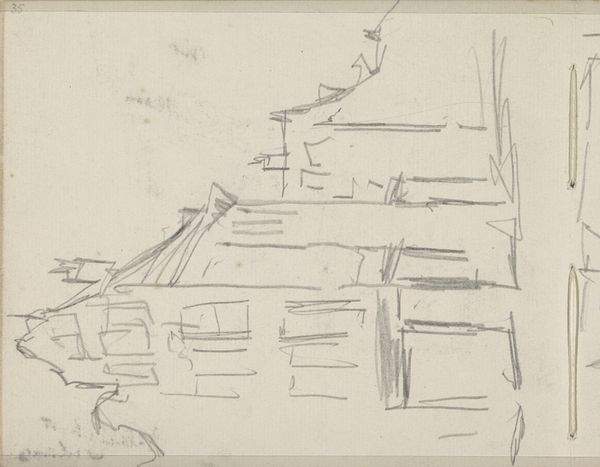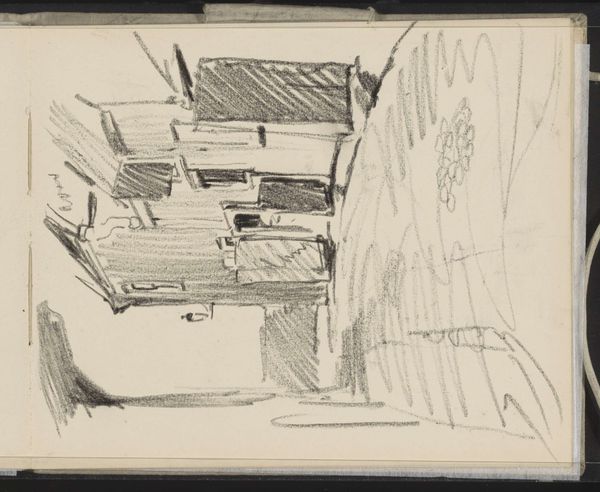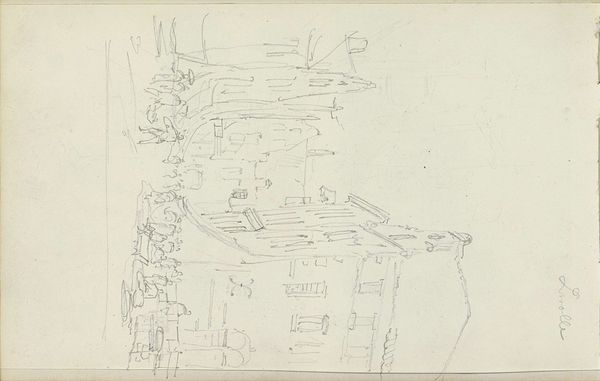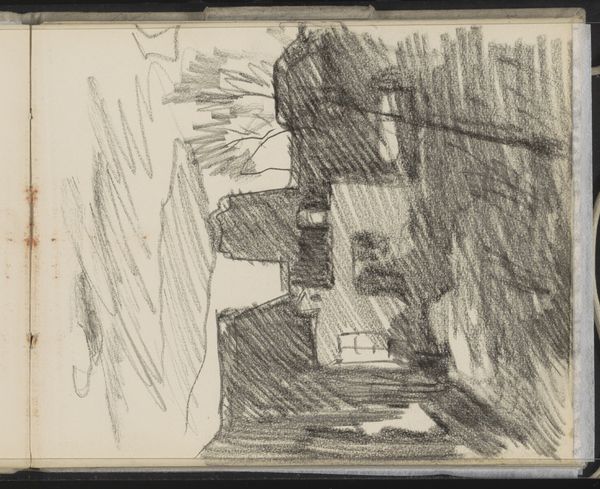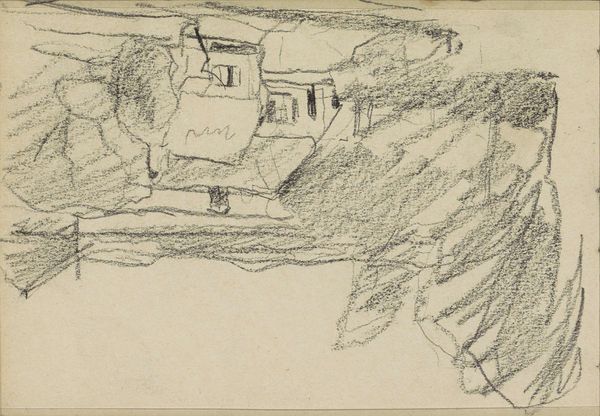
Copyright: Rijks Museum: Open Domain
Editor: So, here we have Isaac Israels's "Theatervoorstelling," likely from the 1915s-1925s. It's a drawing on paper, seemingly a quick sketch. I'm struck by its…unfinished nature, almost like a fleeting impression captured in the moment. What do you see in this piece? Curator: I see Israels engaging with the theater as a public spectacle, but also revealing the artist's private process. Consider the rise of mass entertainment during this period – the theater, music halls. These spaces were deeply connected to social life and the formation of public opinion. What does this sketch, with its seeming incompleteness, tell us about Israels' relationship to these spaces? Is he observing the spectacle, or is he part of the social world of the theater? Editor: That’s interesting, I hadn’t considered that. I was focused on the almost impressionistic rendering. Is the "incomplete" quality significant, maybe speaking to the ephemeral nature of the theatre experience itself? Curator: Precisely! The sketch's immediacy might mirror the fleeting nature of a performance. But consider too, who was represented in these spaces? Was Israels interested in capturing the elite, the working class, or a cross-section of society? These factors all shape how we interpret his rendering. Are we looking at a record of reality or an imaginative commentary? Editor: It really makes me rethink the social and political forces at play behind what seems like a simple sketch. It’s more than just a scene; it reflects society's engagement with the arts. Curator: Indeed. Israels, like many artists of his time, was grappling with the changing dynamics of public life and the role of art within it. By considering the social context, we gain a richer understanding of his artistic choices. Editor: This was enlightening! I never looked at a simple drawing this way, especially from the socio-political aspect.
Comments
No comments
Be the first to comment and join the conversation on the ultimate creative platform.
